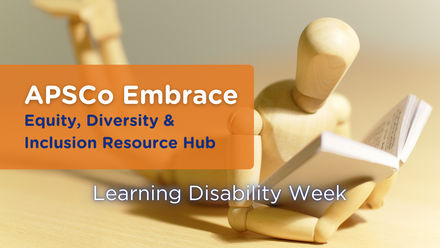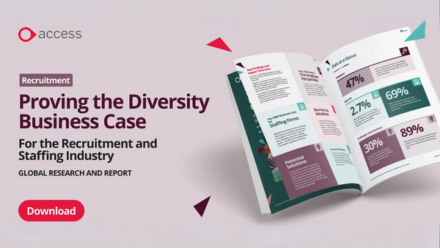APSCo Embrace: How businesses can support socio-economic diversity in the workforce
As a concept, social mobility refers to the ways in which someone’s socio-economic status can change over the course of their lifetime, and how it may differ to those of previous generations. The core consideration with social mobility is to what extent a person’s start in life, including the socio-economic status of their parents, will determine their own educational, occupational and social future.
In the UK, the current reality is that your access to educational and professional opportunities often depends on your class, your education, your geographical location, and the socio-economic status of your parents. And since the onset of the COVID-19 pandemic, the UK has experienced significant economic disruption and a rapidly increasing cost of living which has aggravated existing socio-economic disadvantages.
The Social Mobility Commission’s 2023 State of the Nation report tells us that 85% of young people believe they will have to leave their place of upbringing in order to succeed professionally. The report also indicates a class pay gap in the country, with working-class professionals earning 12% less than their middle- and upper-class counterparts annually. The gap widens further at the intersections of other marginalised communities with working-class women, for example, experiencing a pay gap of 16%.
For businesses, socio-economic diversity remains a challenge much like other facets of inclusion – which is to say, the experiences of working-class people are distinct and become more complex when we begin to factor other aspects of identity. Socio-economic disadvantage also varies significantly in different countries, making uniform solutions very difficult for international organisations.
The conversation isn’t helped by a general lack of understanding and more specifically, a lack of transparency. Particularly in contexts where class discrimination is present, the data required to gain a better picture of social mobility can be seen as invasive. Markers of socio-economic disadvantage can include: childhood postcode, parents’ or caregivers’ occupations, whether someone is first in their family to attend university, and whether someone was eligible for free school meals.
It's vital that businesses overcome the anxieties and stigma around these conversations if they want to build more genuinely inclusive workplaces. And like other aspects of identity, businesses benefit massively from building a culture that supports socio-economic diversity in the workforce.
Benefits of socio-economic diversity to businesses
Building a more socio-economically diverse workforce means a much wider talent pool for businesses. And in the context of skills gaps across numerous industries, organisations can’t afford to be overlooking any demographic segments.
Socio-economic diversity is also key facet of equality, which is something that we know is especially important to Gen Z. According to Glassdoor, 75% of employees aged 18-24 expect their employers to champion equal rights. Diversity in this area also bolsters workplace culture, promoting authenticity and demonstrating that members of all social classes are welcome. Socio-economic diversity can and should play a role in any business’s Environmental Social Governance (ESG) strategy.
As well as strengthening a business internally, socio-economic diversity also has a positive outward impact. A more inclusive business will have better opportunities for progressive employer branding. This is crucial because customers are always looking to engage with trustworthy businesses and to ensure that supply chains are aligned to their own values.
The knowledge and perspective working-class employees can bring to a business will also result in an improved customer experience. Much like widening the talent pool, more socio-economically diverse teams can widen your customer base by providing a more tailored consumer experience.
Tips for businesses to improve socio-economic diversity
Monitoring
- Avoid relying on data. Operate an assumptive approach instead of being dependent on the availability of personal data that employees may or may not wish to share. Data helps, but we can’t let our intentions and efforts be hindered by its absence
- The Social Mobility Commission provides a free employer toolkit for socio-economic inclusion, which provides touchpoints for attracting and retaining staff from more diverse socio-economic backgrounds
Recruitment practices
- Required vs. desired skillsets and experience: it’s common for organisations to advertise opportunities specifically for university graduates, but it’s important to question exactly where and when this is really necessary for a particular role. In industries like recruitment and tech, it’s often less relevant than we first assume
- Accessibility: making assumptions about the tech and tools somebody will have at their disposal can exclude some candidates. When we think about smartphones or even internet access, we may assume that everyone has unlimited home use, but some will be making use of public facilities, such as at a public library which will have limited hours
- Deadlines: ensure a fair application deadline to allow those who require longer to access facilities the time to complete their applications. Make sure to avoid making recruitment decisions until after the application deadline to prevent bias towards candidates with more immediate access to the necessary technology
- Consider individual circumstances for access to mock evaluation tests, psychometric tests, pre-interview preparation requirements etc.
- Standardise your overall recruitment process for equal access
- Consider a wider range of job boards when advertising to ensure you reach a wider audience
- Avoid bias in favour of those with professional connections. Don’t offer work placements to board members’ family without advertising the same opportunities for the family of employees across different levels of the business or without also offering the same opportunities externally
- Don’t assume that diverse talent will come to you, proactively go out and look for it
Outreach and engagement
- Careers education: engage with a wide range of contact points to ensure that those who have less access to careers education and opportunity are included, e.g. education staff, parents/carers and other businesses
- Charity engagement: there are many reputable charities promoting social mobility across the UK working closely with organisations to facilitate social mobility engagement (The Social Mobility Foundation, LTSB, upReach, Career Ready, The Talent Tap, Social Mobility Business Partnership, Making the Leap, The 93 Per Cent Club)
Work placements
- Ensure opportunities are available for non-university candidates
- Replace any unpaid internships with opportunities that pay at least a living wage
Career pathways
- Recruit with a view to supporting upskilling as this enables employees who may previously have had limited opportunities to continue their professional development
- Consider where you can support reskill opportunities for staff already within your organisation rather than recruiting externally
- Ensure fair, transparent and consistent career pathways that don’t consider background, demographics, professional relationships etc.
- Ensure that the same pathways are available to employees who have entered the workforce via both academic and vocational routes
- Coaching: consider implementing a coaching scheme to identify and support future leaders from different socio-economic backgrounds. Consider a reverse mentoring scheme to encourage existing leaders to engage with different class perspectives
Working trends
- Hybrid and remote working: fewer days onsite means lower commuting costs and therefore makes opportunities more accessible to candidates with less disposable income or who live further away
- The increased catchment area puts better-paid jobs within reach of those in non-urban areas, which are historically associated with lower socio-economic status
- Be mindful of the requirements of remote working such as utility costs and a reliable internet connection. Consider offering support through a remote working allowance or support with commuting costs for onsite days to balance out at-home costs
- Ensure that potential biases are not exacerbated by less frequent face-to-face interactions
- Consider the additional external responsibilities your employees may have. Those with care-giving responsibilities may benefit from a flexible working pattern that allows them to meet their hours in a way that suits them. Employees from lower socio-economic backgrounds are statistically more likely to have at-home caring responsibilities than those with higher incomes who can afford external care support
Inclusive internal culture
- Try to ensure that the role models you uplift are reflective of society and the real world, representing a range of experiences and social classes. This helps break down perceived and real barriers
- Encourage intersectional workplace allyship to show what is possible for people of all backgrounds and to tackle social conditioning against different classes
- Embed inclusive practices in your company culture and values, rather than as an additional requirement or optional engagement
- Mitigate everyday biases to ensure that those with hiring and decision-making responsibilities comply with inclusive best practice
- Work on inclusive leadership and leader engagement with EDI and social mobility initiatives to ensure a broader range of professional relationships are available to those from lower socio-economic backgrounds
Summary
As awareness and practice continue to develop around inclusion for various marginalised communities, it’s important that we address socio-economic diversity with the same intention. As with other aspects of identity, socio-economic background comprises a complex range of experiences and requires both care and action from businesses as we seek to build genuinely inclusive workplaces and reap the multiple benefits of a diverse workforce.
Caroline Fox is the Global Equality, Diversity & Inclusion Strategy Lead at Tenth Revolution Group. Caroline joined the tech talent solutions firm in 2013 as part of the talent acquisition team and now leads the company’s EDI programme, bolstering an inclusive workspace and promoting best practice within the wider tech industry




